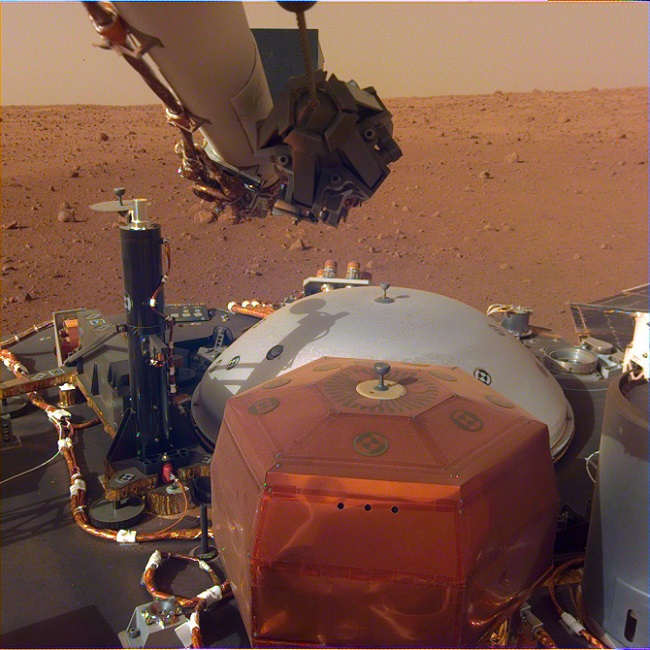
|
|

|
|
| April 20, 2024 |
|
First Martian ‘sounds’ ever heard by Earthlings 
PASADENA – (INT) - NASA's Interior Exploration using Seismic Investigations, Geodesy and Heat Transport InSight lander, which touched down on Mars last month, has provided the first ever "sounds" of Martian winds on the Red Planet.
InSight sensors captured a haunting low rumble caused by vibrations from the wind, estimated to be blowing between 10 to 15 mph. The winds were consistent with the direction of dust devil streaks in the landing area, which were observed from orbit. "Capturing this audio was an unplanned treat," said Bruce Banerdt, InSight principal investigator at NASA's Jet Propulsion Laboratory (JPL) in Pasadena, California. "But one of the things our mission is dedicated to is measuring motion on Mars, and naturally that includes motion caused by sound waves." Check it out at https://www.nasa.gov/insightmarswind Two very sensitive sensors on the spacecraft detected these wind vibrations: an air pressure sensor inside the lander and a seismometer sitting on the lander's deck, awaiting deployment by InSight's robotic arm. This is the only phase of the mission during which the seismometer, called the Seismic Experiment for Interior Structure SEIS, will be capable of detecting vibrations generated directly by the lander. "That's literally what sound is - changes in air pressure," said Don Banfield InSight's science lead for APSS from Cornell University in Ithaca, New York. "You hear that whenever you speak to someone across the room." Unlike the vibrations recorded by the short period sensors, audio from APSS is about 10 hertz, below the range of human hearing. The raw audio sample from the seismometer was released unaltered; a second version was raised two octaves to be more perceptible to the human ear - especially when heard through laptop or mobile speakers. The second audio sample from APSS was sped up by a factor of 100, which shifted it up in frequency. An even clearer sound from Mars is yet to come. In just a couple years, NASA's Mars 2020 rover is scheduled to land with two microphones on board. The first, provided by JPL, is included specifically to record, for the first time, the sound of a Mars landing. The second is part of the SuperCamand will be able to detect the sound of the instrument's laser as it zaps different materials. This will help identify these materials based on the change in sound frequency. Story Date: December 10, 2018
|